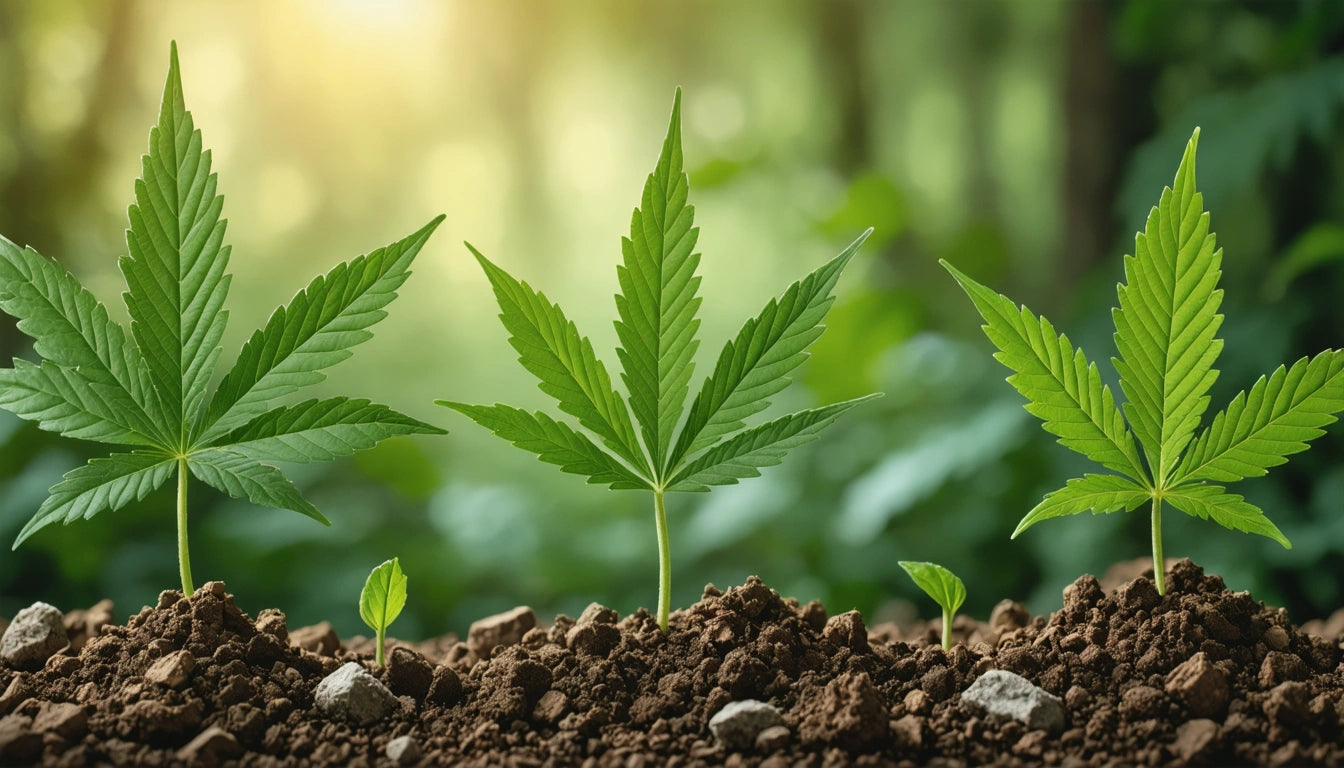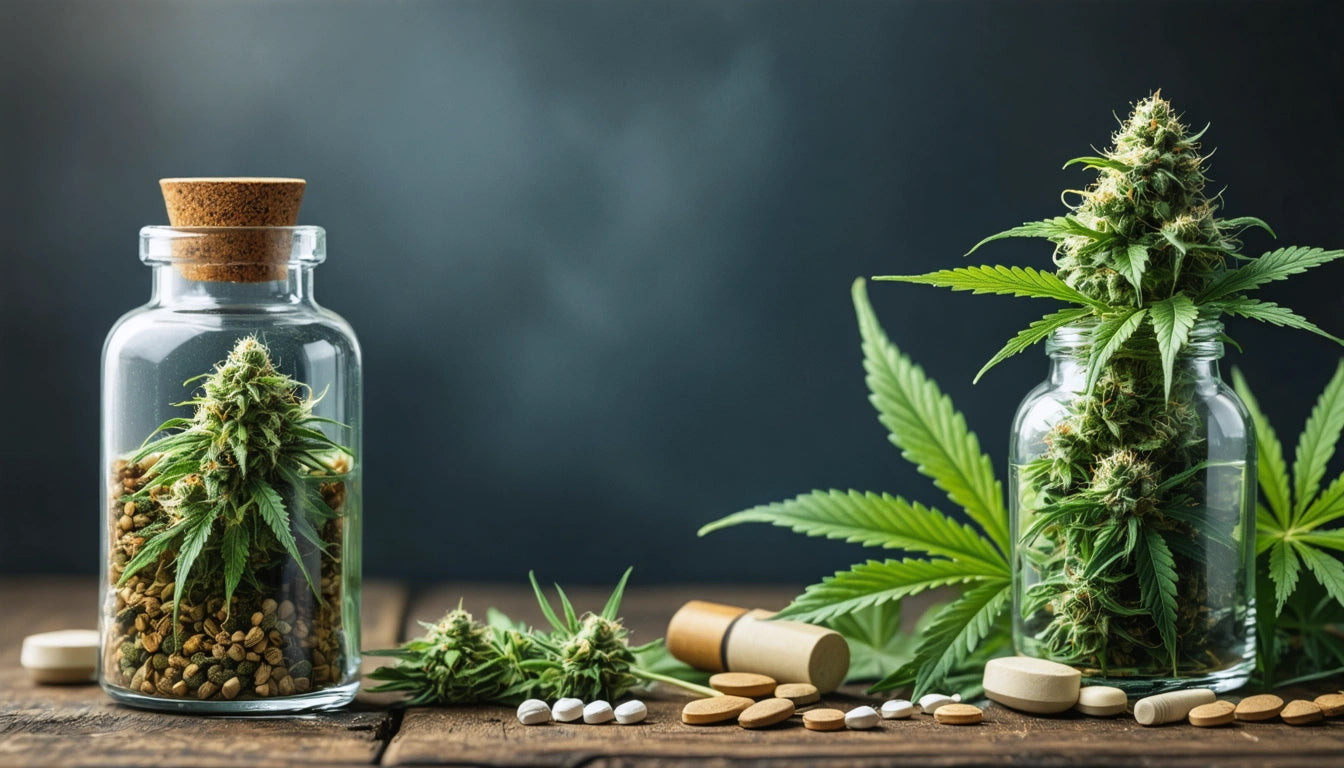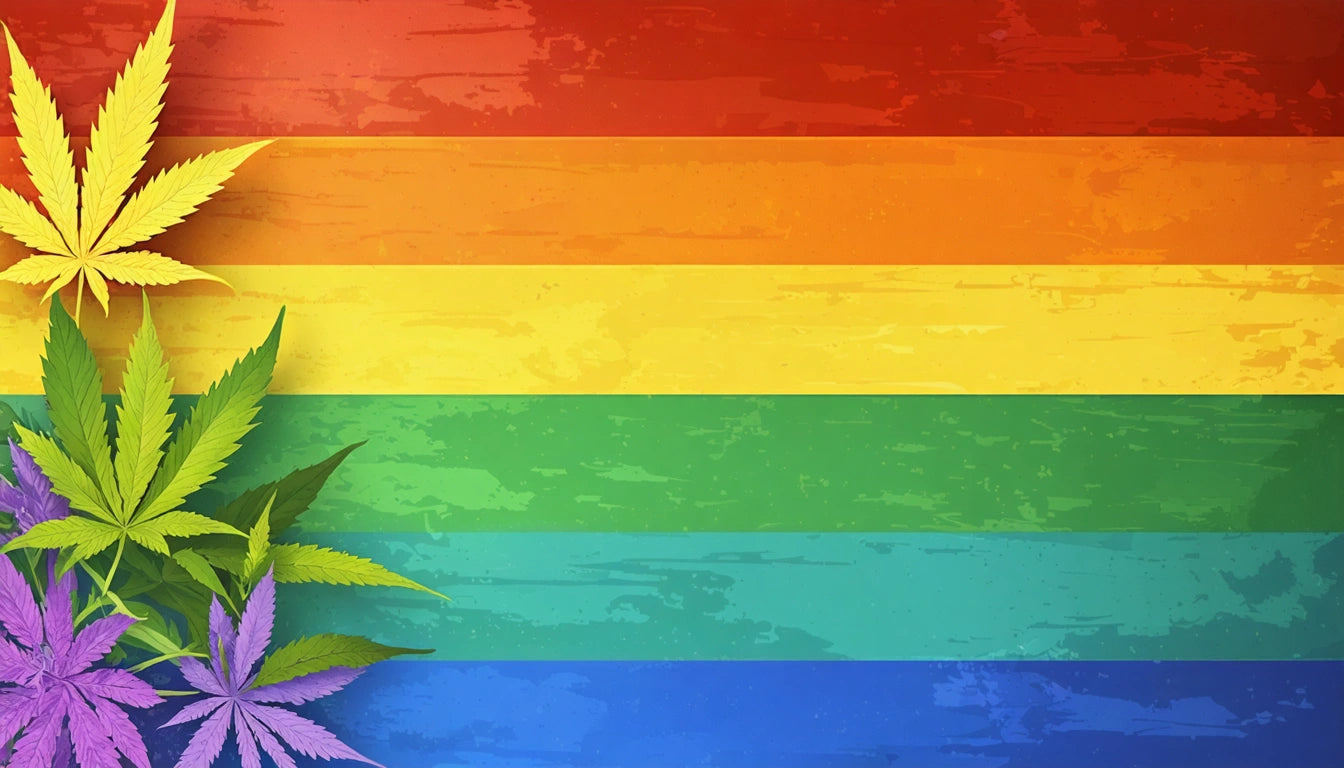Table of Contents
As the cannabis industry grows, so does its environmental footprint. Packaging waste has become a significant concern, prompting brands to seek more sustainable solutions. Two terms frequently discussed are "compostable" and "recyclable" packaging, but understanding the difference is crucial for making informed decisions that align with both business goals and environmental values.
Understanding Sustainable Packaging Options
Sustainable packaging aims to reduce environmental impact throughout its lifecycle. For cannabis products, this presents unique challenges due to strict regulatory requirements for child-resistance, product protection, and information display. According to industry statistics, cannabis packaging generates millions of pounds of waste annually, making the shift toward sustainable options increasingly important.
The two primary sustainable packaging categories, recyclable and compostable, offer different environmental benefits and operational considerations. Each requires specific infrastructure for proper end-of-life processing and presents distinct advantages depending on your product type, market, and sustainability goals.
Recyclable Cannabis Packaging Explained
Recyclable packaging is designed to be collected, processed, and manufactured into new products after its initial use. Common recyclable materials in cannabis packaging include:
- Glass jars and containers
- Certain plastics (typically #1 PET and #2 HDPE)
- Aluminum tins and containers
- Paperboard and cardboard
The recyclability of packaging depends not only on the material itself but also on local recycling infrastructure. For example, while glass is theoretically 100% recyclable, not all recycling facilities accept colored glass. Similarly, multi-material packaging (like plastic with paper labels) may require separation before recycling.
One significant advantage of recyclable materials is their established processing infrastructure. Many municipalities already have systems in place for collecting and processing recyclable waste. Additionally, using recycled content in new packaging can reduce virgin resource consumption and energy use in manufacturing.
Compostable Cannabis Packaging Explained
Compostable packaging is designed to break down completely into non-toxic components (water, carbon dioxide, and biomass) when placed in specific composting conditions. These materials return to the earth as nutrient-rich soil rather than being reprocessed into new products.
Common compostable materials in cannabis packaging include:
- PLA (polylactic acid) derived from corn or sugarcane
- Hemp-based plastics
- Mushroom packaging
- Bagasse (sugarcane fiber)
It's essential to distinguish between home compostable and industrially compostable materials. Home compostable packaging breaks down in backyard compost piles (typically within 180 days), while industrially compostable packaging requires the higher temperatures and controlled conditions of commercial composting facilities.
Environmental Impact Comparison
When comparing environmental impacts, several factors must be considered:
Resource Consumption
Recyclable materials often require more energy in their initial production but can be reused multiple times. Compostable materials typically have lower production energy requirements but are designed for single use before composting.
End-of-Life Processing
Recyclable packaging depends on proper sorting and processing facilities. Contamination can render batches unrecyclable. Compostable packaging requires access to industrial composting facilities, which aren't available in all regions.
Carbon Footprint
The carbon footprint comparison varies based on material type, manufacturing process, transportation distance, and end-of-life handling. For example, lightweight compostable films may have lower transportation emissions than heavier glass containers, but glass can be recycled many more times.
For cannabis producers implementing automated packaging processes, the material choice affects operational efficiency. Our automated filling equipment can be configured to work with various sustainable packaging options, helping brands maintain production speeds while transitioning to greener alternatives.
Compliance and Certification Considerations
When selecting sustainable packaging, look for credible certifications that verify environmental claims:
- Recyclable certifications: How2Recycle label, RIC (Resin Identification Code)
- Compostable certifications: BPI (Biodegradable Products Institute), TÃœV Austria (OK Compost)
- General sustainable packaging: FSC (Forest Stewardship Council), SFI (Sustainable Forestry Initiative)
These certifications help prevent greenwashing and provide assurance that materials will perform as claimed. For a comprehensive overview of relevant certifications, refer to this certification guide.
Cannabis packaging must also meet regulatory requirements for child-resistance, which can complicate sustainability efforts. Balancing compliance and sustainability requires careful material selection and design innovation.
Making the Right Choice for Your Brand
Several factors should guide your decision between recyclable and compostable packaging:
Product Requirements
Consider moisture barriers, light protection, and shelf life needs. Some products may require the barrier properties that only certain recyclable materials can provide.
Local Infrastructure
Research the waste management systems in your target markets. If industrial composting isn't widely available, recyclable options might be more practical.
Consumer Education
Regardless of your choice, educating consumers on proper disposal is essential. Clear instructions on packaging can improve end-of-life handling.
Cost Considerations
Sustainable packaging often comes at a premium. Strategic pricing approaches can help maintain margins while investing in better environmental options.
Future of Sustainable Cannabis Packaging
The sustainable packaging landscape continues to evolve with innovations like bioplastics made from cannabis waste, reusable container programs, and packaging materials with reduced volume and weight. As consumer demand for eco-friendly options grows and regulations evolve, brands that proactively adopt sustainable packaging gain competitive advantage and contribute to industry-wide improvement.
Whether you choose recyclable or compostable options, the most important factor is making an informed decision based on your specific product needs, market conditions, and authentic sustainability goals. By understanding the true differences between these options and implementing them thoughtfully, cannabis brands can reduce their environmental impact while meeting regulatory requirements and consumer expectations.











Leave a comment
All comments are moderated before being published.
This site is protected by hCaptcha and the hCaptcha Privacy Policy and Terms of Service apply.